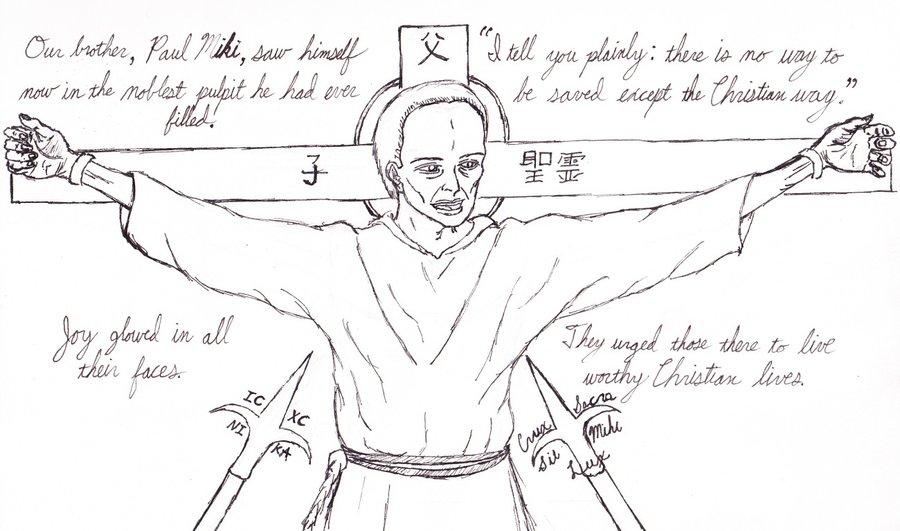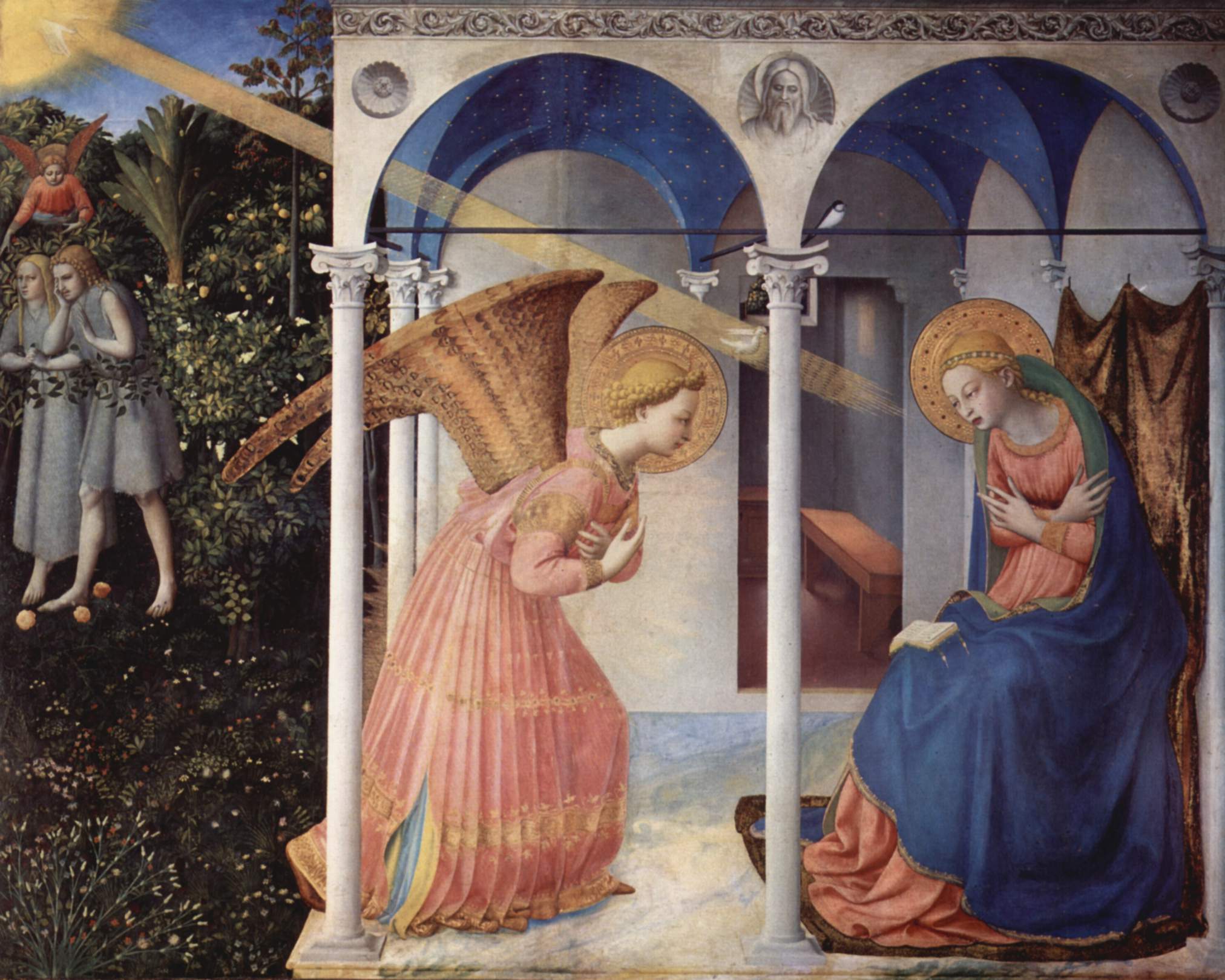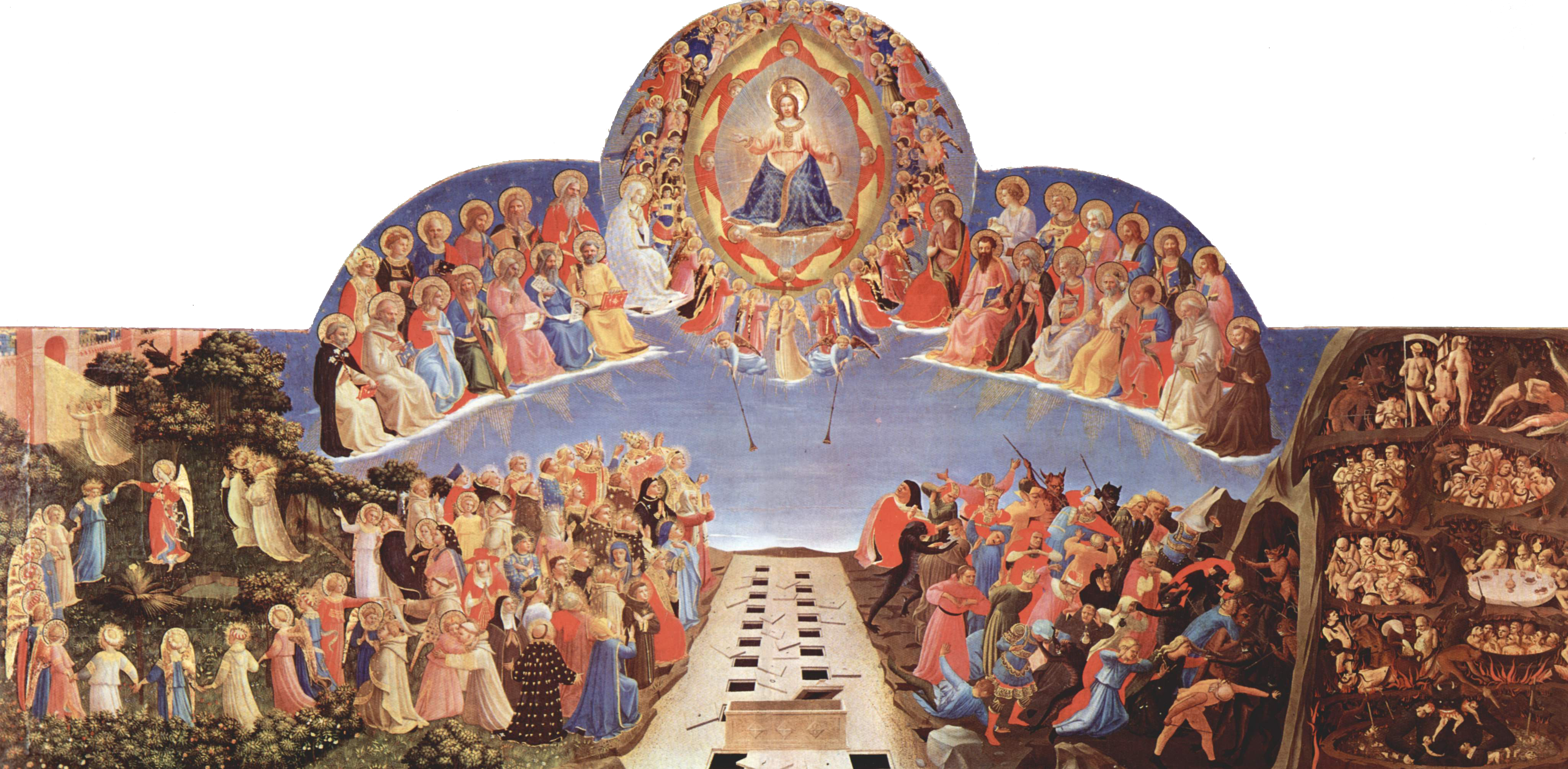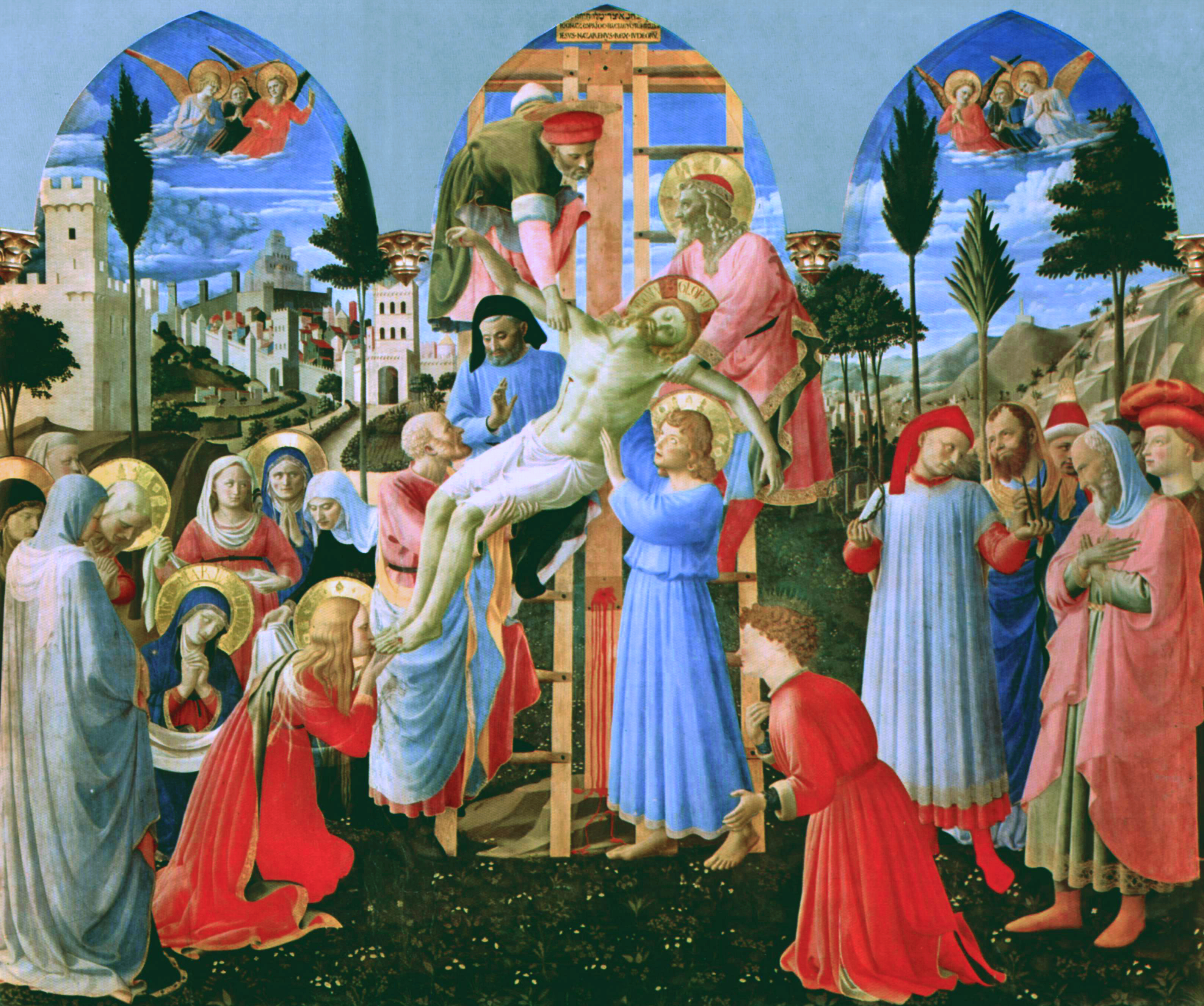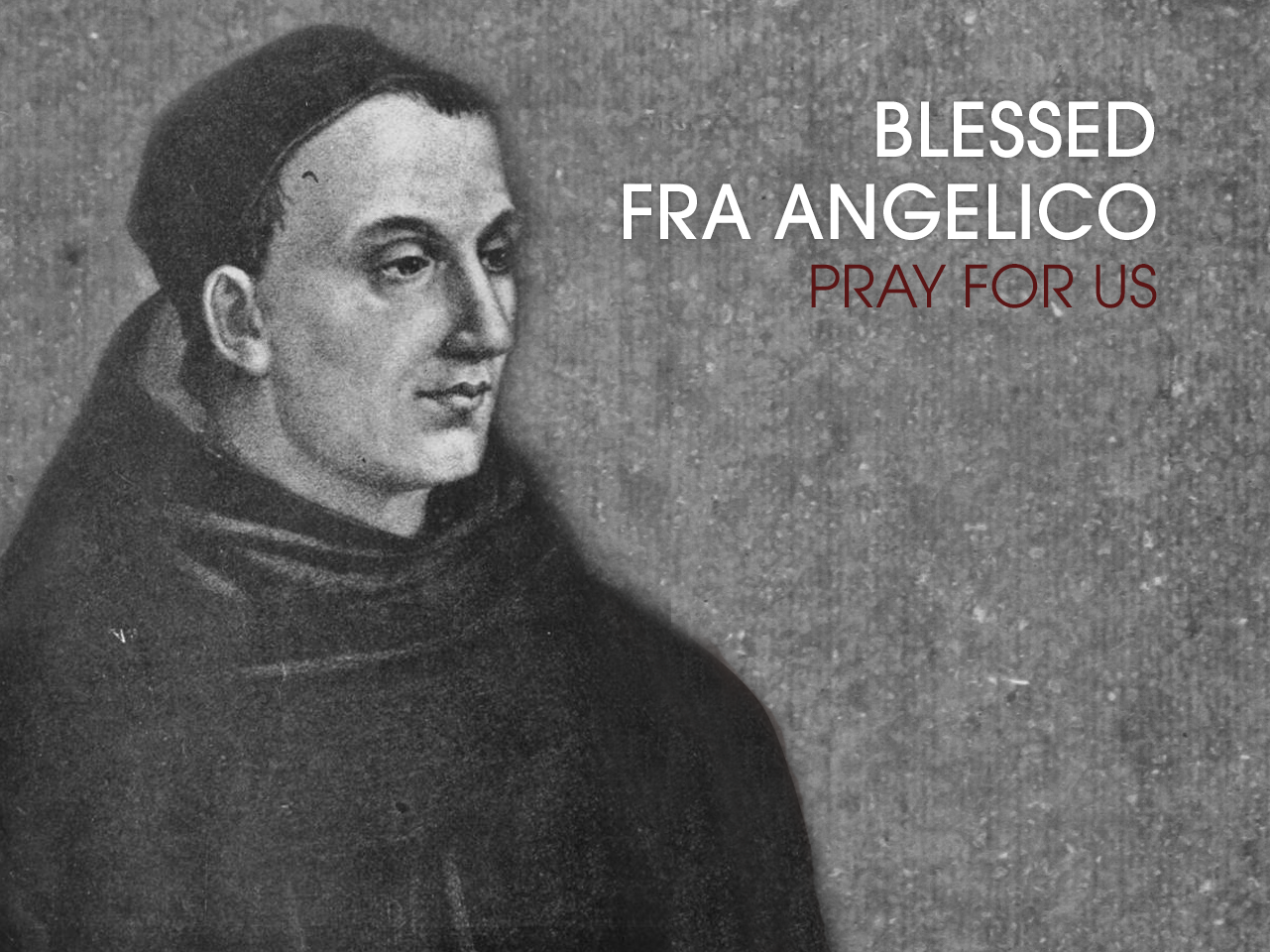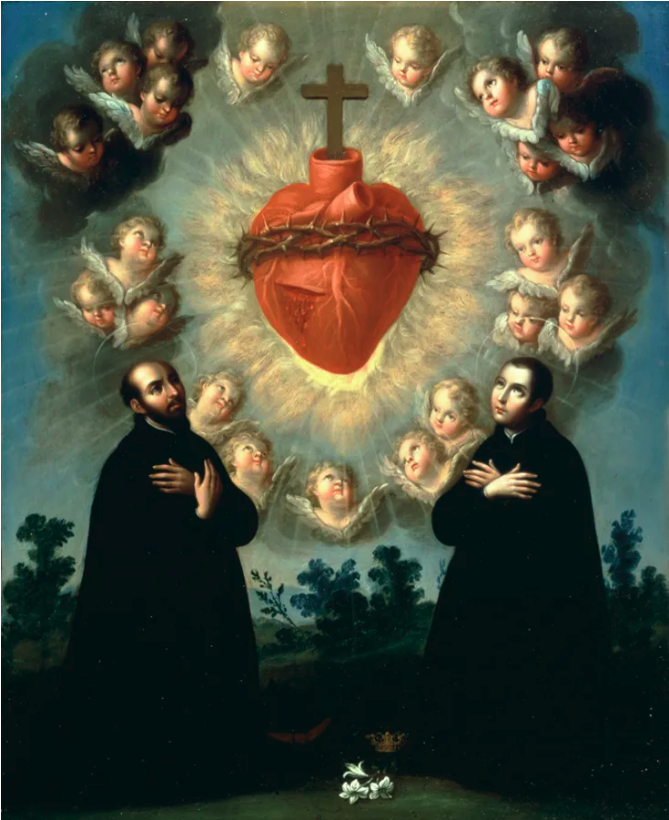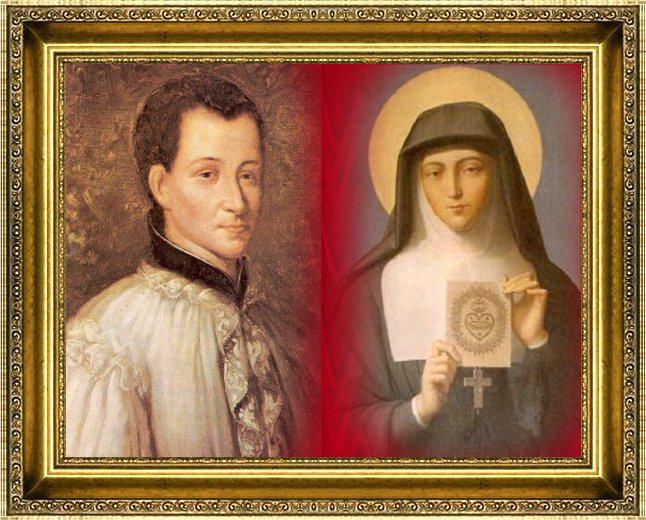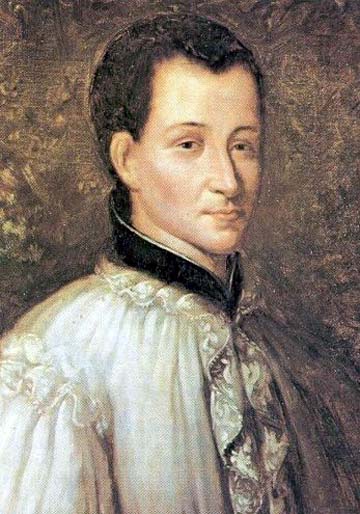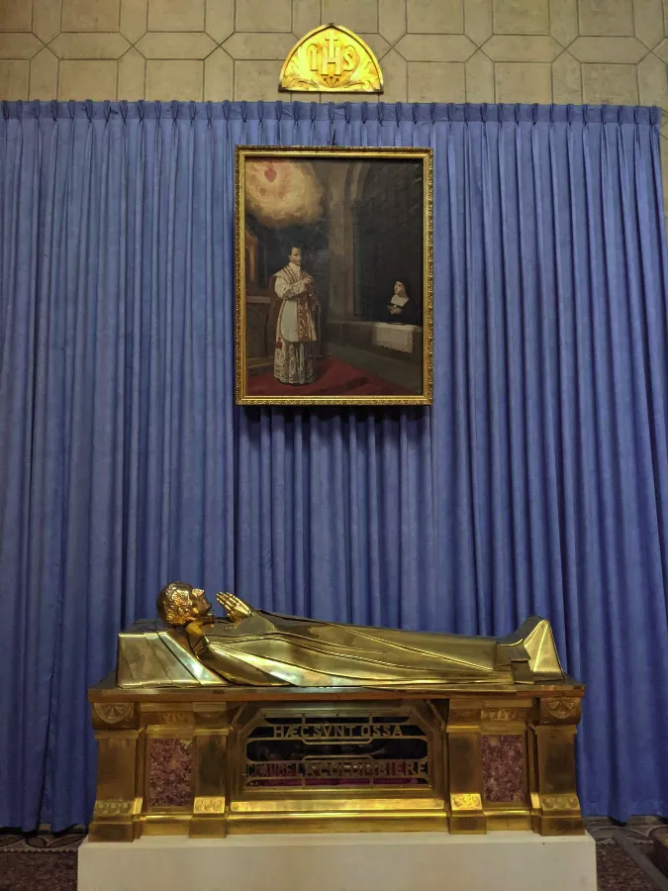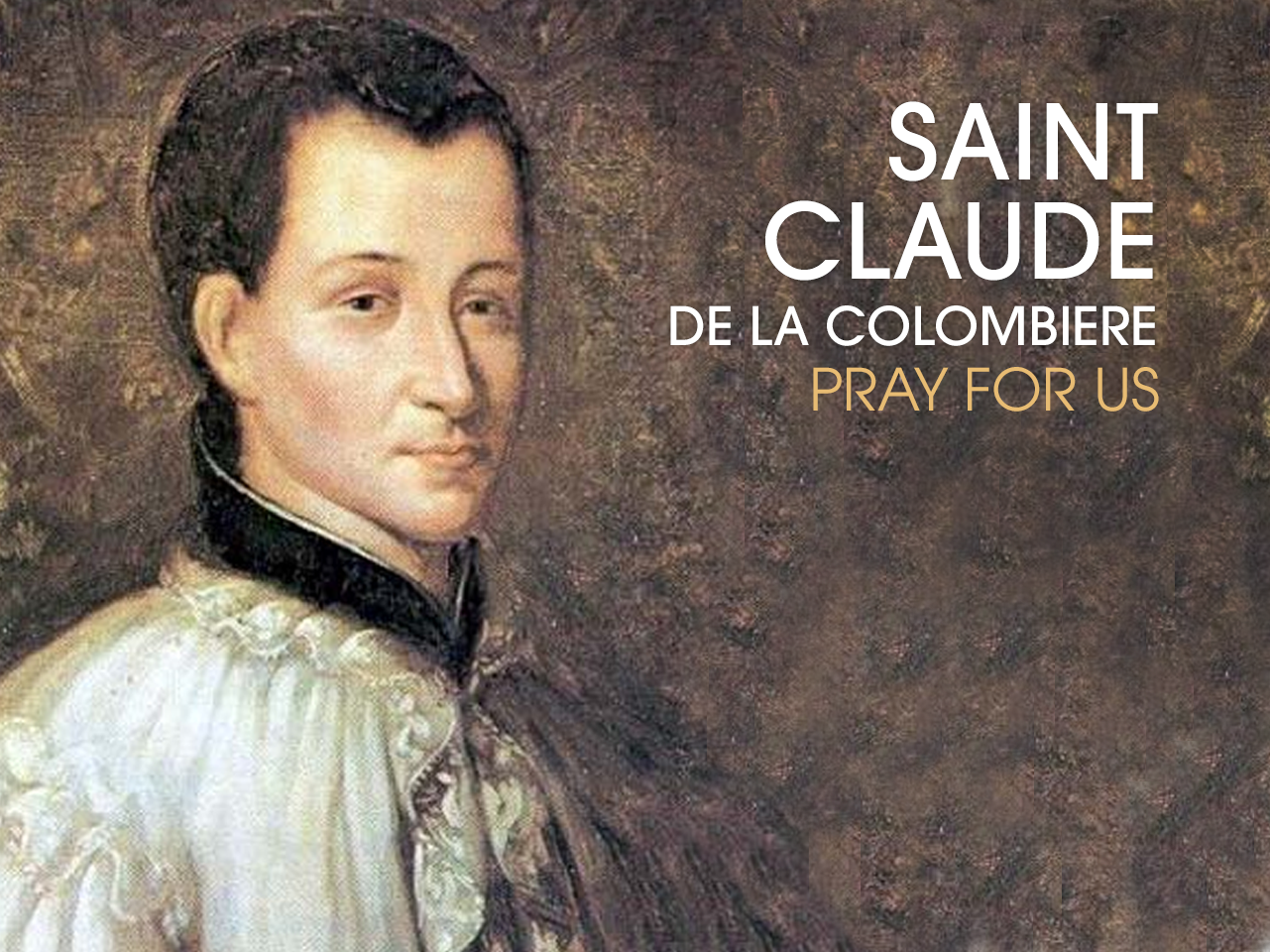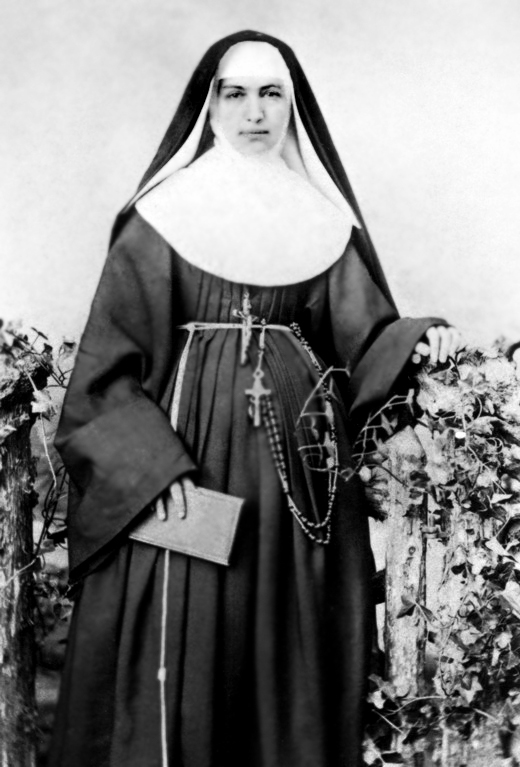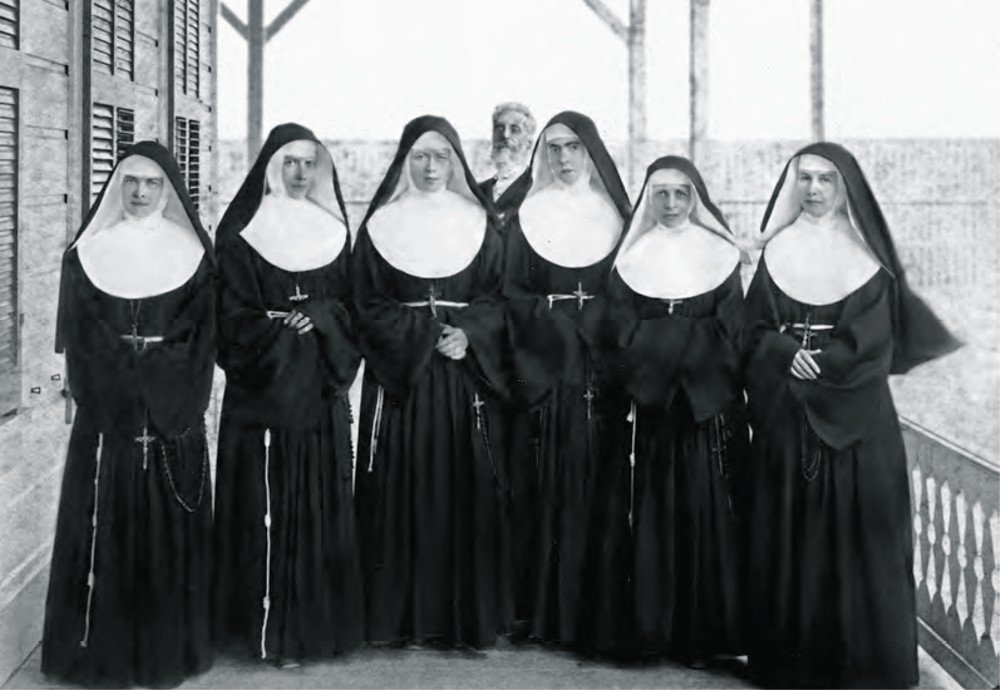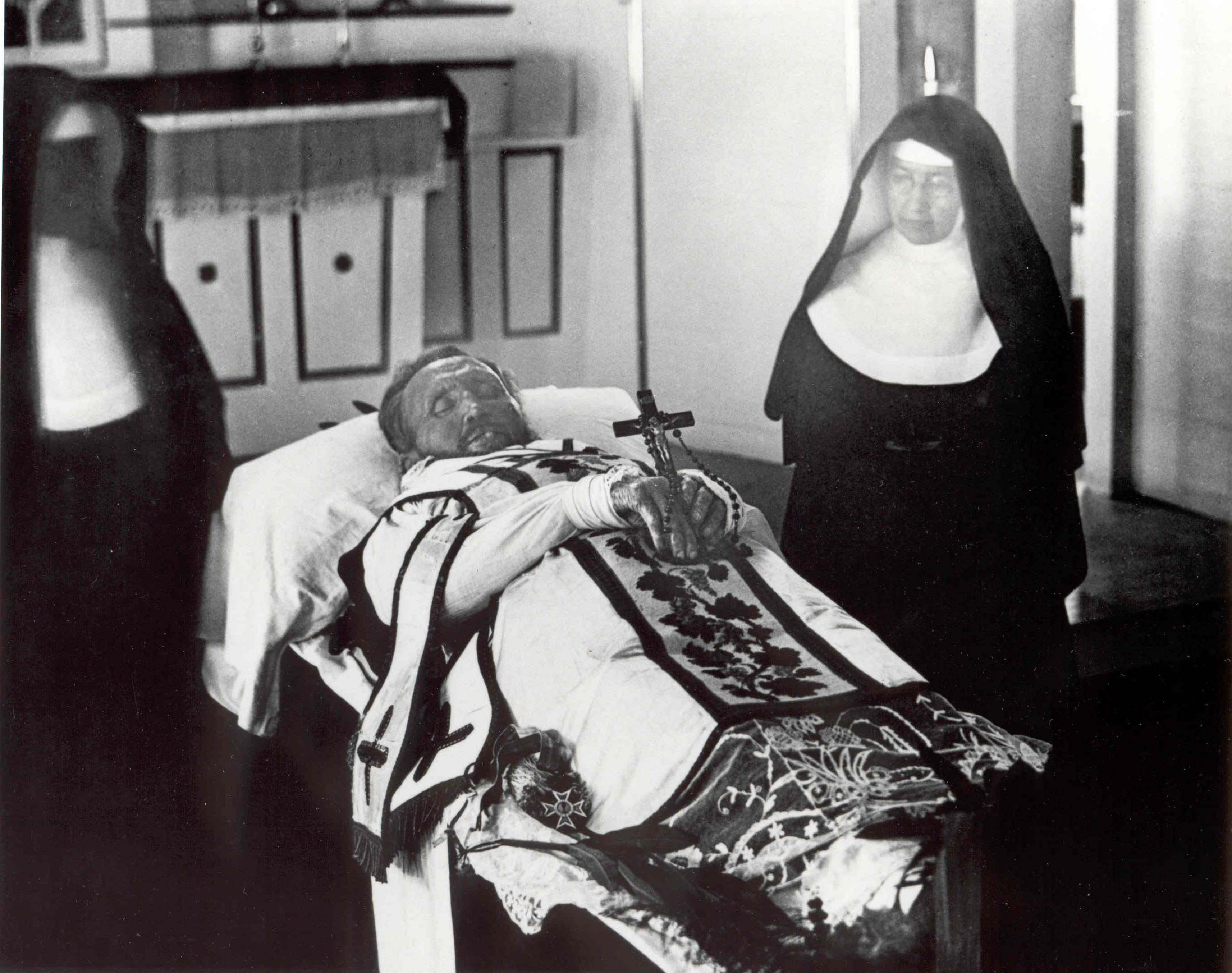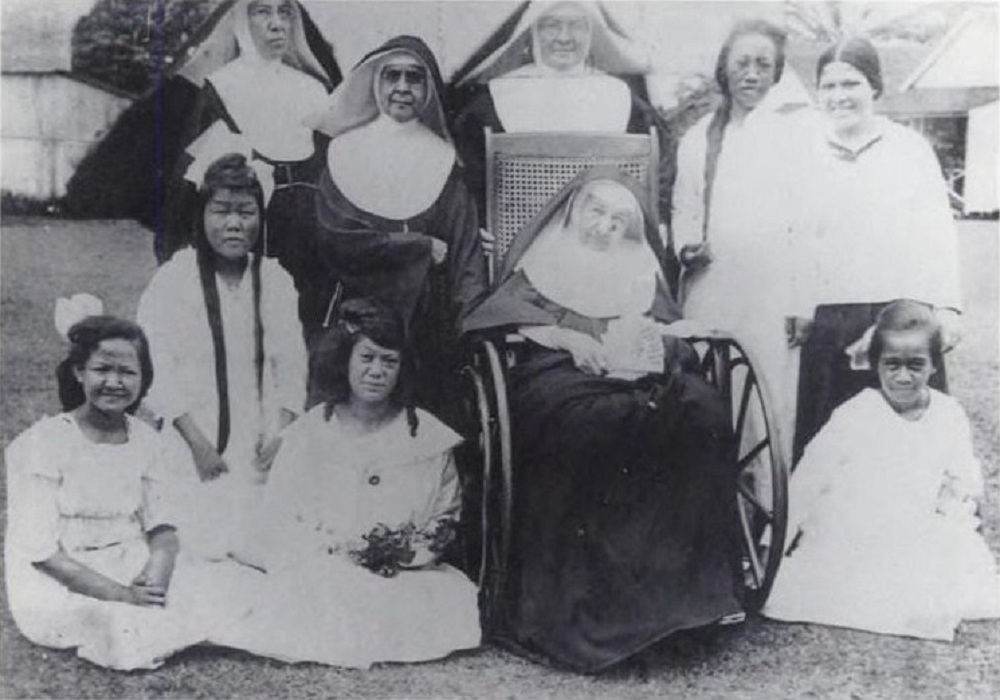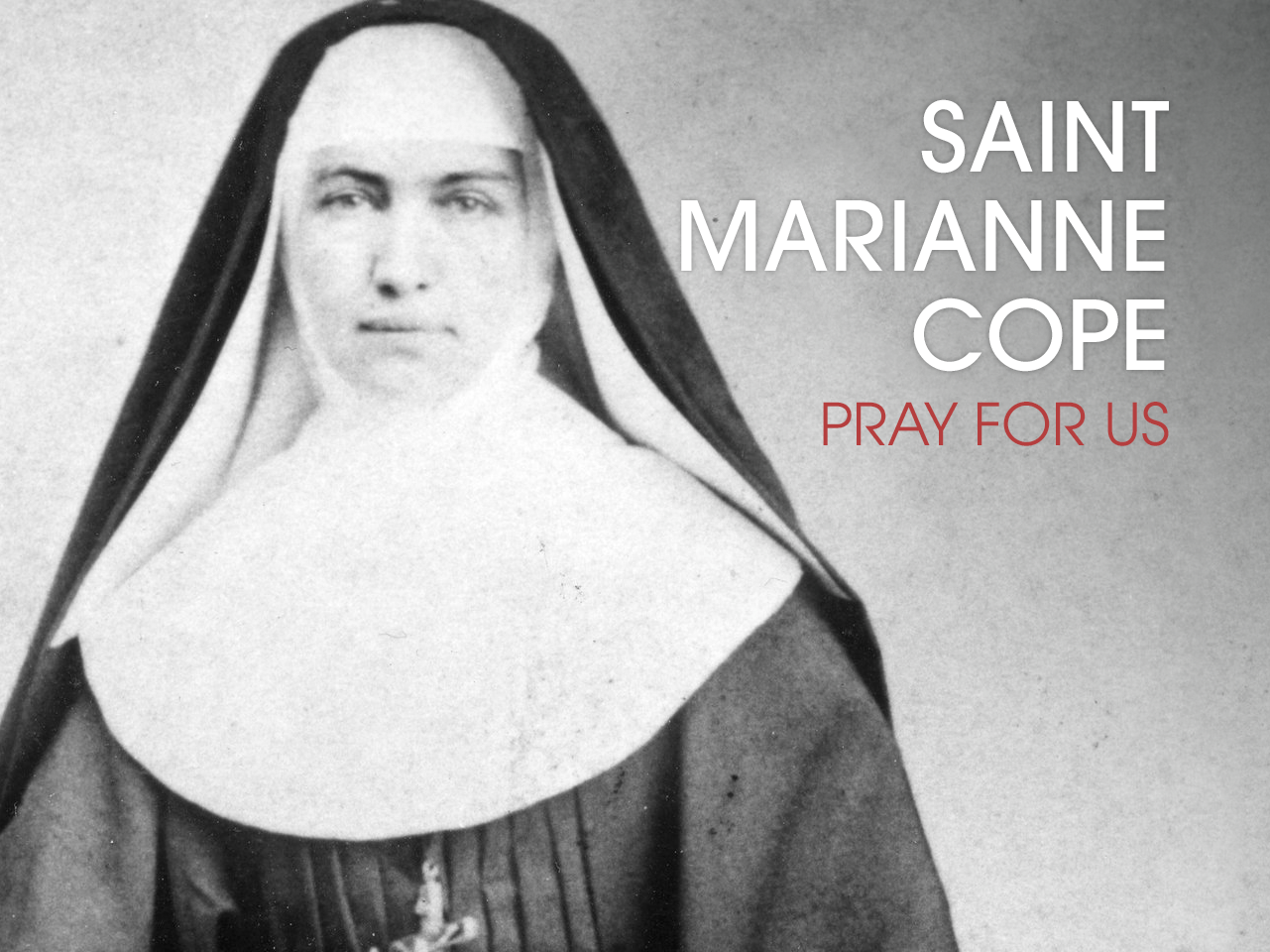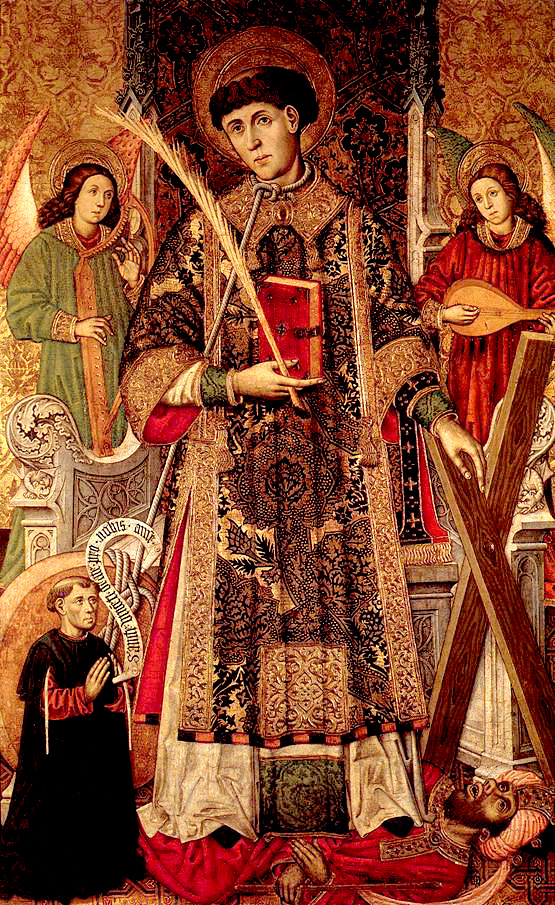
-Vicente de Zaragoza, anonymous, 16th century
Vincent was archdeacon of the church at Saragossa, Spain, at the end of the 3rd and beginning of the 4th century, AD. Valerian, his friend and the bishop of that diocese at that time, had an impediment in his speech; thus Vincent preached in his stead. Valerian had ordained his friend Vincent deacon.
The Roman emperors had published their edicts against the clergy in 303, and the following year against the laity. Vincent and his bishop were imprisoned in Valencia. Hunger and torture failed to break them. Like the youths in the fiery furnace (Book of Daniel, chap 3), they seemed to thrive on suffering.
It was Vincent who answered in his own and in his bishop’s and friend’s name for them both when both were brought before Dacian, governor of Valencia during the persecution of Diocletian.
When Valerius was sent into banishment and exile, Vincent remained to suffer and to die, and faced the full fury of Dacian’s rage and earthly power.
First of all, he was stretched on the rack; and, when he was almost torn asunder, Dacian, asked him in mockery “how he fared now.” Vincent answered, with joy in his face, that he had ever prayed to be as he was then. Uncontrollably frustrated in his lack of success to fully control Vincent, the main effect the tortures as they progressed was the progressive disintegration of Dacian himself, emotionally and psychologically. Dacian then had the torturers beaten themselves for their failure.
It was in vain that Dacian struck the executioners and goaded them on in their savage work. The martyr’s flesh was torn with hooks; he was bound in a chair of red-hot iron; lard and salt were rubbed into his wounds; and amid all this he kept his eyes raised to heaven, and remained unmoved.
Finally Dacian suggested a compromise: Would Vincent at least give up the sacred books to be burned according to the emperor’s edict? He would not. Torture on the gridiron continued, the prisoner remaining courageous, the torturer losing control of himself. Vincent was thrown into a filthy prison cell—and converted the jailer. Dacian wept with rage, but strangely enough, ordered the prisoner to be given some rest.
Vincent was cast into a solitary dungeon, with his feet in the stocks; but the angels of Christ illuminated the darkness, and assured Vincent that he was near his triumph. His wounds were now tended to prepare him for fresh torments, and the faithful were permitted to gaze on his mangled body. They came in troops, kissed the open sores, and carried away as relics cloths dipped in his blood. Before the tortures could recommence, the martyr’s hour came, and he breathed forth his soul in peace.
“Wherever it was that Christians were put to death, their executions did not bear the semblance of a triumph. Exteriorly they did not differ in the least from the executions of common criminals. But the moral grandeur of a martyr is essentially the same, whether he preserved his constancy in the arena before thousands of raving spectators or whether he perfected his martyrdom forsaken by all upon a pitiless flayer’s field” (The Roman Catacombs, Hertling-Kirschbaum).
Even the dead bodies of the saints are precious in the sight of God, and the hand of iniquity cannot touch them. A raven guarded the body of Vincent where it lay flung upon the earth. When it was sunk out at sea the waves cast it ashore; and his relics are preserved to this day in the Augustinian monastery at Lisbon, for the consolation of the Church of Christ.
St. Vincent suffered martyrdom at Valencia in Spain in the year 303 during the persecution of Diocletian and Maximian. His story has been transmitted to posterity in three documents: the Passion, a hymn of Prudentius, and the sermons of St. Augustine. The hymn of Prudentius, entitled “The Passion of the Holy Martyr Vincent,” certainly precedes the writings of Augustine and may also precede the other work known as the Passion. It is the primary reference I have used in this account.
During the persecution, Vincent, a deacon of the Church of Saragossa in Spain, was apprehended and brought before the prefect Dacian. Initially, using “soft, cajoling words,” the judge attempted to get Vincent to renounce his faith and worship the pagan gods as the laws of Rome demanded.
In answer Vincent then cries out,
A levite of the sacred tribe,
Who at God’s altar stands and serves,
One of the seven pillars white:
‘Let these dark fiends rule over you,
Bow down before your wood and stone;
Be you the lifeless pontifex
Of gods as dead as you, yourself.
‘But we, O Dacian, will confess
The Father, Author of all light,
And Jesus Christ, His only Son,
As one true God, and Him adore.’
The prefect was angered at Vincent’s scorn for the gods of Rome. He forcefully retorted that Vincent must bend to the civil power that ruled the world or die.
‘Give ear to this fiat of mine:
You must now at this altar pray
And offer up incense and turf,
Or bloody death will be your lot.’
Vincent was undeterred and invited the judge to use whatever power he might muster. Even then, Vincent insisted, he would still defy the laws. He then boldly rejected the judge’s threat in a less than tactful manner.
‘How senseless are your false beliefs,
How stupid Caesar’s stern decree!
You order us to worship gods
That match your own intelligence.’
Vincent ridiculed the idols made by human hands and the foolishness of housing them in costly temples. He declared that any spirits dwelling there were infernal powers living in terror of Christ and His kingdom.
No longer could the wicked judge
Endure the martyr’s ringing words,
‘Silence the wretch,’ he madly cries;
‘Stop his contemptuous blasphemies!
‘Come tie his hands behind his back
And on the rack his body turn,
Until you break his tortured limbs
And tear asunder every joint.
‘When this is done, flay him alive
With piercing blows that bare the ribs,
So that through deep and gaping wounds
The throbbing entrails may be seen.’
And so, Vincent was tortured. But still, he did not yield. The indomitable deacon laughed at his torments and rebuked the two executioners for not wounding him more grievously. They were rapidly becoming exhausted with their efforts.
The martyr now in ecstasy,
No shadow of his bitter pain
Upon his shining countenance,
In vision, saw Thee near, O Christ.
‘O shame! What face the man puts on!’
Cried Dacian in an angry voice.
‘More ardent than his torturers
He beams with joy and courts their blows!’
The prefect recognized that the punishments being meted out to Vincent were having no effect. He did not criticize the torturers for they knew their work well and had never been outdone. Rather, he ordered them to rest their hands awhile so that their muscles might revive.
‘Then when his wounds are dry,
And clotted blood has formed hard scabs,
Your hands may plow them up again
And rend anew his tortured frame.’
To him the levite makes reply:
‘If now you see that all the strength
Of your vile dogs is giving way,
Come, mighty slaughterer, yourself,
‘Come, show them how to cleave my flesh
And my inmost recesses bare;
Put in your hands and deeply drink
The warm and ruddy streams of blood.
‘You err, unfeeling brute, if you
Imagine that you punish me
When you dismember me and kill
A body that is doomed to die.
‘There is within my being’s depths
Another none can violate,
Unfettered, tranquil and unmarred,
Immune from pain and suffering.’
Vincent explained that it is the spirit within him that Dacian must subdue. He added that that spirit is free, invincible, and subservient to God alone.
Then the tortures resumed. The prefect saw he was unable to break Vincent and tried another tack. He asked Vincent to show him his scriptures so that he might consign them to the flames. The martyr quickly replied that anyone who threatened to burn the holy books would suffer an even worse fate and end up “in the depths of hell.”
The tyrant, maddened at these words
Turns pale, then red with burning rage;
He rolls his frenzied blood-shot eyes,
Foams at the mouth and grinds his teeth.
Then after some delay, he roared:
‘Let trial by torture now be made,
The crown of all our punishments,
The gridiron, flames, and red-hot plates.’
The dauntless martyr hurried with swift steps to receive these new torments. With “no trace of fear upon his brow,” he mounted the pyre “as though ascending upon high to take possession of his crown.” The crackling fire sent forth sparks that implanted themselves “with sizzling punctures in his flesh.” Fat oozed forth from the burning wounds and slowly covered his frame with smoking oil.
Unmoved amid these sufferings,
As though unconscious of his pain,
The saint to Heaven lifts his eyes,
For heavy fetters stay his hands.
Then the prefect has Vincent raised “from his fiery bed of pain” and “cast into a dungeon foul … a stifling subterranean pit.”
The angry foe now hurls the saint
Into this pit of deepest woe
And thrust his feet in wooden stocks
With tortured limbs set far apart.
The monster skilled in penal art
Then adds a torment new and strange,
To no oppressor known before,
Recorded in no previous age.
He orders broken earthenware,
Sharp-cornered, jagged, piercing keen,
Spread out upon the dungeon floor
To make for him a painful bed.
However, the plans of the prefect are once again frustrated. The darkness of the prison cell is soon replaced with a radiant light. The stocks on the martyr’s feet fly open.
And then does Vincent recognize
That Christ, the Source of light, has come
To bring the promised recompense
For all the pangs he has endured.
He sees the broken earthenware
Now clothe itself with tender flowers
That fill the narrow prison vault
With fragrance like to nectar sweet.
And then around the martyr throngs
A host of angels greeting him,
Of whom one of majestic mien
Accosts the hero in these words:
‘Arise, O glorious martyr saint,
Arise, set free from all your chains,
Arise, now member of our band,
And join our noble company.
‘You have already run your course
Of frightful pain and suffering;
Your passion’s goal is now attained,
And death now gives you kind release.’
Vincent’s sufferings were ended. The light within the cell penetrated the bolted door through narrow crevices. The guardian of the cell who had been stationed there to keep watch noticed the light. He also heard the prisoner singing and more hauntingly, he also heard “a voice chanting in response.”
Then, trembling, he draws near the door
And plants his eyes against the jamb
That he may through the narrow slit
Explore the room as best he can.
He sees the bed of potsherds bloom
With fragrant flowers of many hues,
And, singing as he walks about,
The saint himself with fetters loosed.
The jailer sent word to the prefect who again reacted with rage. He wept at his defeat. He groaned with anger and chagrin. Next, he ordered Vincent to be removed from the dungeon and asked that his wounds be bathed with healing balms. His intention was that when the prisoner was somewhat restored, he would again be put to torture.
Upon his release, the faithful from all the city thronged to their deacon. They made him an easeful bed, cared for his wounds, and carried away blood-soaked cloths as relics. The warden of his prison cell accepted Christ with sudden faith. Soon afterwards, in this peaceful setting, Vincent died.
The prefect was furious that Vincent had eluded him yet again and was determined to feed the anger that “burned within his vengeful heart.”
As serpent of its fangs bereft
The madman raged in frenzy wild.
‘The rebel has evaded me
And carried off the palm,’ he cries.
‘Though he be dead, I still can wreck
One last outrage upon this wretch:
I’ll throw his body to the beasts,
Or give it to the dogs to rend.’
Dacian wanted to destroy Vincent’s body lest it be honored in a tomb inscribed with the martyr’s name. Accordingly, “the sacred body he exposed, all naked in a sedgy marsh.” And then a strange thing occurred — despite the indignity to the body, neither beast nor bird fed on the corpse. In fact, a raven guarded the body. It drove away a bird of prey and also a huge ferocious wolf.
The prefect, unsuccessful in his first plan, concocted another. He decided to plunge the body into the sea where it would be food for fish or where it would be tossed by storms and be torn and rended on the jagged points of flinty rocks. He sought for someone who would undertake the task.
‘Is there some man among you here
Who, skilled in piloting a boat
With oar and rope and hoisted sail,
Can briskly plow the open sea?
‘Go, take the body that now lies
Unharmed among the marshy reeds
And, in a wherry light and swift,
Bear it away through surging tides.
‘Wrap up the corpse and then enclose
It in a sack of rushes made,
To which a heavy stone is tied,
That it may sink into the deep.’
A soldier, a fierce, hot-headed ruffian, volunteered for the job. He wove a net of ropes into which he sewed Vincent’s lifeless form. Then he sailed into the middle of the sea and hurled it out into the waves. Although a heavy stone had been attached to it, the body of the saint did not sink. Rather, it moved with the tide toward the curving shore.
The heavy millstone swims along
As lightly as the snow-white foam;
The bag that holds the sacred pledge
Is borne on top of swelling waves.
Aghast, the baffled mariners
Behold it floating calmly back
Across the level shining sea,
Sped on by favoring tide and wind.
With rapid oars they cleave the main,
As wroth they urge their vessel on,
But far ahead the body flies
Into a quiet, secluded bay.
The body came to rest on the friendly beach before the skiff could reach the shore. And there it was buried until the Christians could build a tomb for the body. Later, when the persecution was over, a church was built and the blessed bones of Vincent were laid in the sanctuary and buried at the foot of the altar.
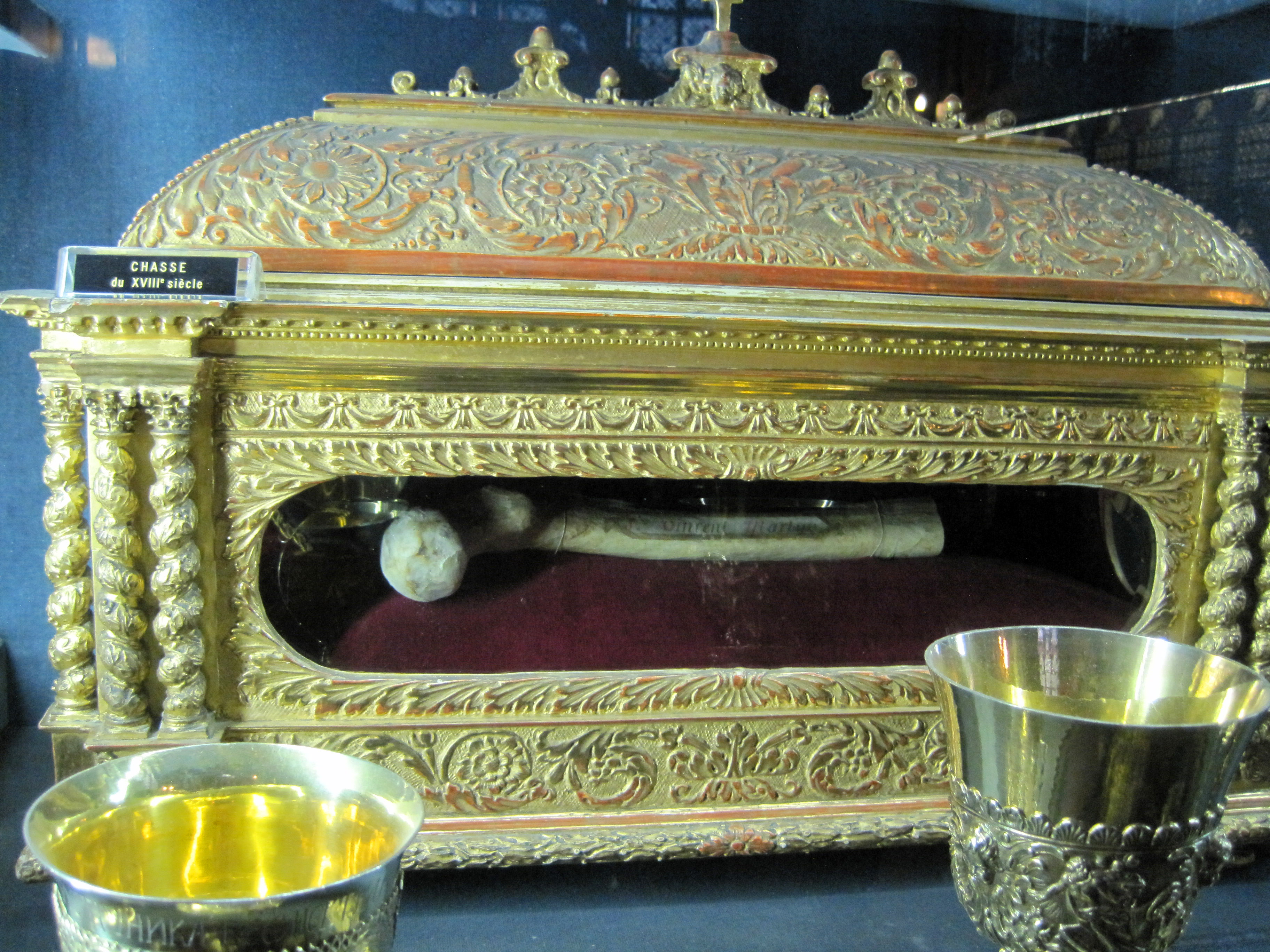
-Reliquary containing the leg bone of St. Vincent, located in the Treasury of Notre Dame Cathedral, Paris.
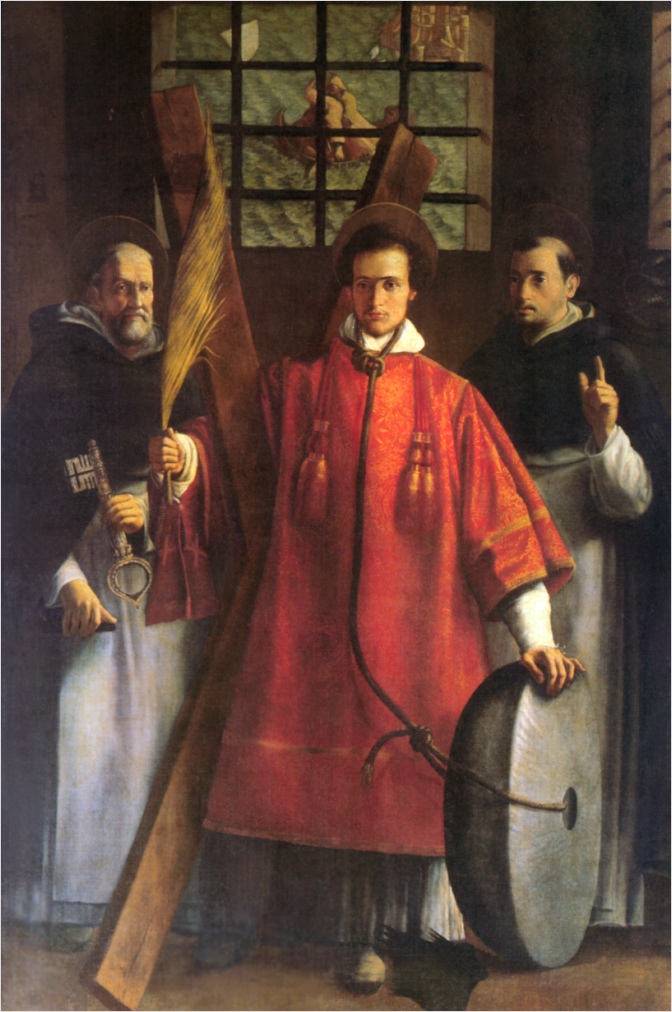
-San Vicente Mártir arrojado al muladar. Escultura en alabastro. Documentado 1533 – Diego de Tredia – Museo de Bellas Artes de Valencia.
Love,
Matthew

